
The Faberge Museum is a private museum with a collection of Russian jewelry and decorative arts of the 19th and 20th centuries, the pearl of the collection of which are Faberge products, including imperial Easter eggs.
The museum is located in a historic building - the Shuvalov Palace, where, when visiting the museum, you can also see the restored halls.
Shuvalovsky Palace, full name: Naryshkin-Shuvalov Palace (by the names of the owners) - a former palace, which is now a monument of history and architecture of the 19th century.
The construction of the palace was started in the 1780s with the construction of the left part of the building by the Vorontsov family. The right-hand extension was added in 1821-1822 by the new owner of the site - chief Yeghermeister Dmitry Lvovich Naryshkin. The new extension was built, perhaps, according to the project of the architect Karl Ivanovich Rossi.
Subsequently, the owner of the palace-the son of Dmitry Lvovich, sold the building to his cousin Lev Alexandrovich Naryshkin. Under Lev Alexandrovich, architect Bernard de Simon carried out a large-scale reconstruction of a number of internal rooms of the palace, and both parts of the building were united by a single facade by architect N. Ye. Efimov.
Since 1846, the palace was owned by Sofia Lvovna Naryshkina and her husband Pyotr Pavlovich Shuvalov-hence the double name of the palace; then-their heirs.
After the October Revolution and until 1925, the premises of the former palace were occupied by the museum of noble life.
In Soviet times, the palace changed its purpose, and within its walls were placed: the house of printing, the house of technology, and the house of friendship and peace with the peoples of foreign countries.
In the 2000s, the palace was restored. On November 19, 2013, the Faberge Museum was opened in the Shuvalov Palace, which is located within the walls of the palace today.
The building of the palace-museum has an eclectic architectural style-a combination of elements of late classicism and Neo-Renaissance.
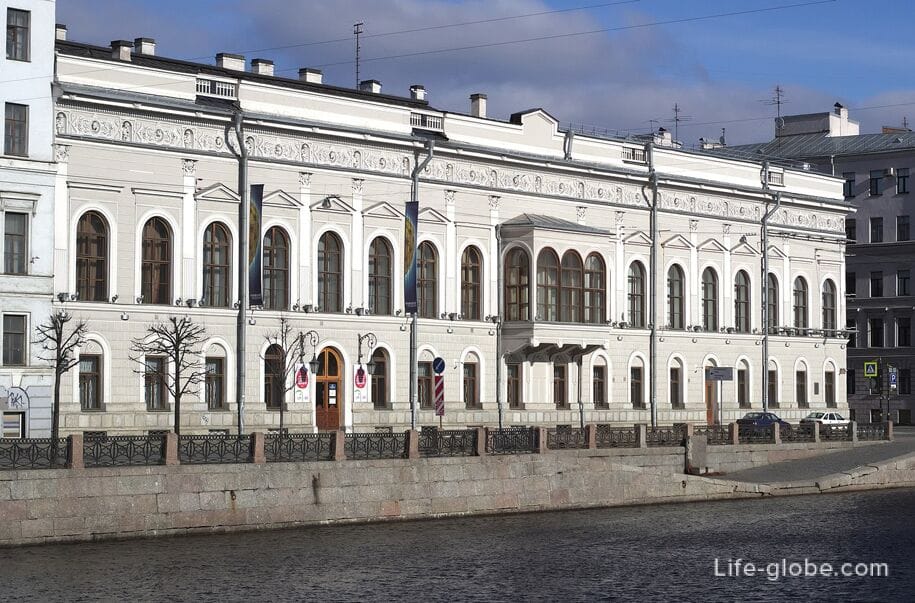
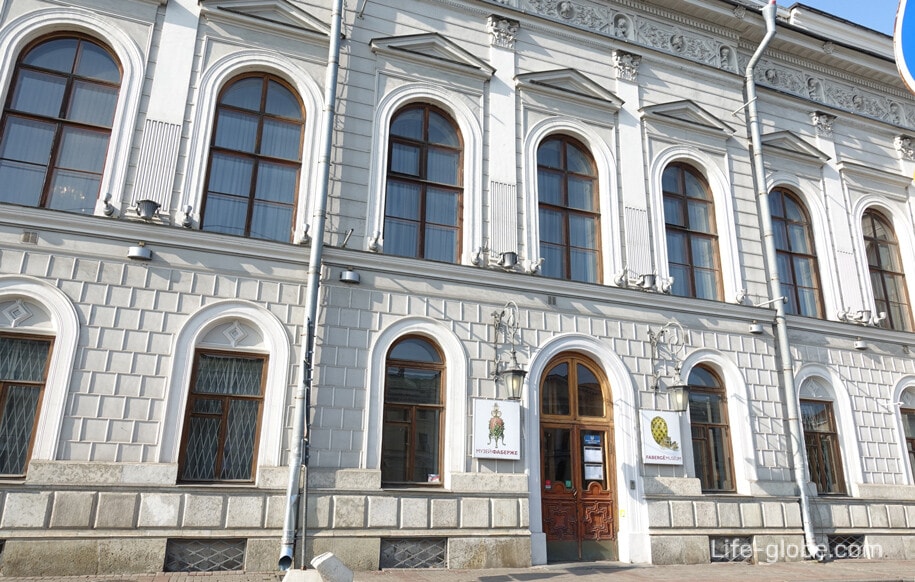
The Faberge Museum is private. After its opening, it became the first non-state museum of federal scale in Russia.
The history of the museum dates back to 2004, when the Russian entrepreneur Viktor Vekselberg acquired the famous Faberge collection of products that belonged to the heirs of the American media magnate Malcolm Forbes.
At that time, the collection consisted of more than 200 items, including 9 unique Easter eggs created by Karl Faberge for the last two Russian emperors. By purchasing a collection at auction (the whole one) Viktor Vekselberg saved the collection as a whole and returned the unique items to their homeland-Russia, in order to make them available to the public.
Later, the Faberge collection was supplemented by other items of famous Russian jewelers of the 19th-early 20th century, collected over 10 years around the world: in Europe, Asia, North and South America.
In this painstaking way, we managed to create an invaluable collection of Russian jewelry art.
Today, the center of the collection is the world's largest collection of Faberge products, numbering more than 1,000 items: so-called fantasy items, jewelry and accessories, ceremonial silver, precious haberdashery and interior items.
The museum also contains other precious items related to the history of the Romanov Family: personal items and official "cabinet" gifts presented to prominent people of that time on behalf of the Russian emperor.
Russian Russian porcelain of the 19th century, enamels, stone-cutting products, Russian icons, paintings and silver are also on display at the Faberge Museum.
An exquisite and unsurpassed part of the collection, of course, is the unique Easter eggs, nine of which were created by Faberge on the orders of the Emperors Alexander III and Nicholas II:
- easter egg "Chicken". The first egg of the imperial series, a gift from Emperor Alexander III to his wife-Empress Maria Feodorovna, for Easter 1885. St. Petersburg, 1885, firm of K. Faberge, master E. Collin;

- easter egg-box "Renaissance". A gift from Emperor Alexander III to his wife, Empress Maria Feodorovna, for Easter 1894. St. Petersburg, 1894, firm K. Faberge, master M. Perkhin;
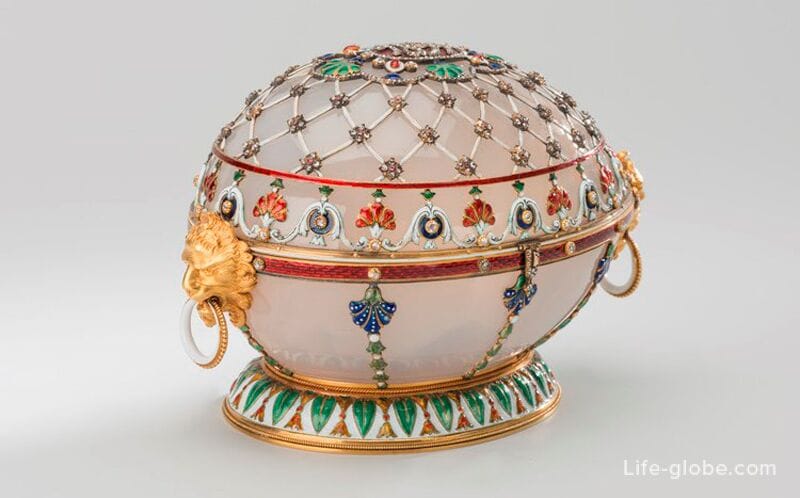
- easter egg "Rosebud". A gift from Emperor Nicholas II to his wife, Empress Alexandra Feodorovna, for Easter 1895. St. Petersburg, 1895, firm K. Faberge, master M. Perkhin;
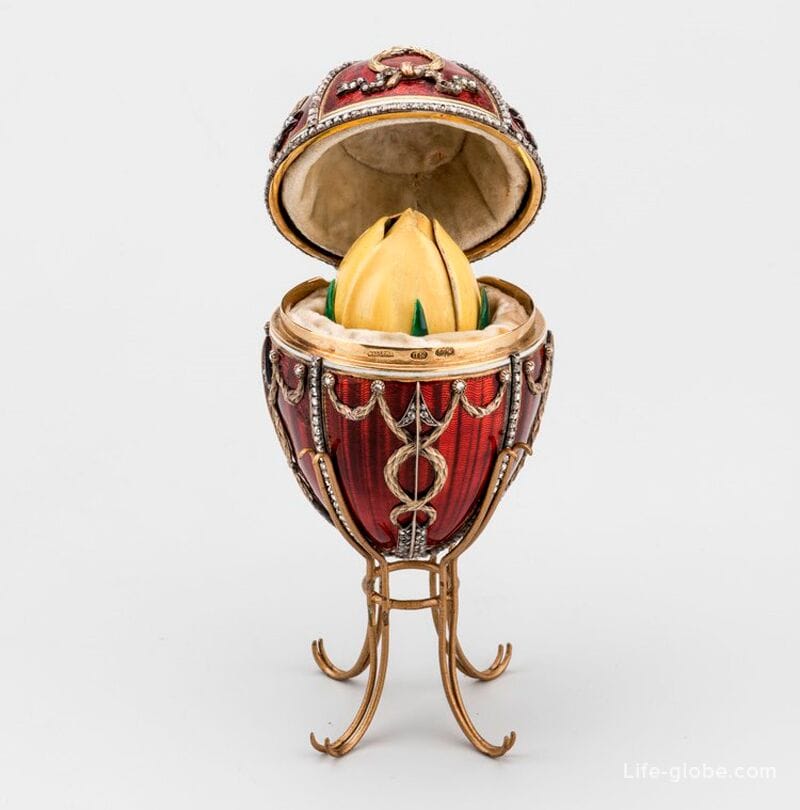
- easter egg "Lilies of the Valley". A gift from Emperor Nicholas II to his wife, Empress Alexandra Feodorovna, for Easter 1898. St. Petersburg, 1898, firm of K. Faberge, master M. Perkhin, miniatures by I. Tseingraf;
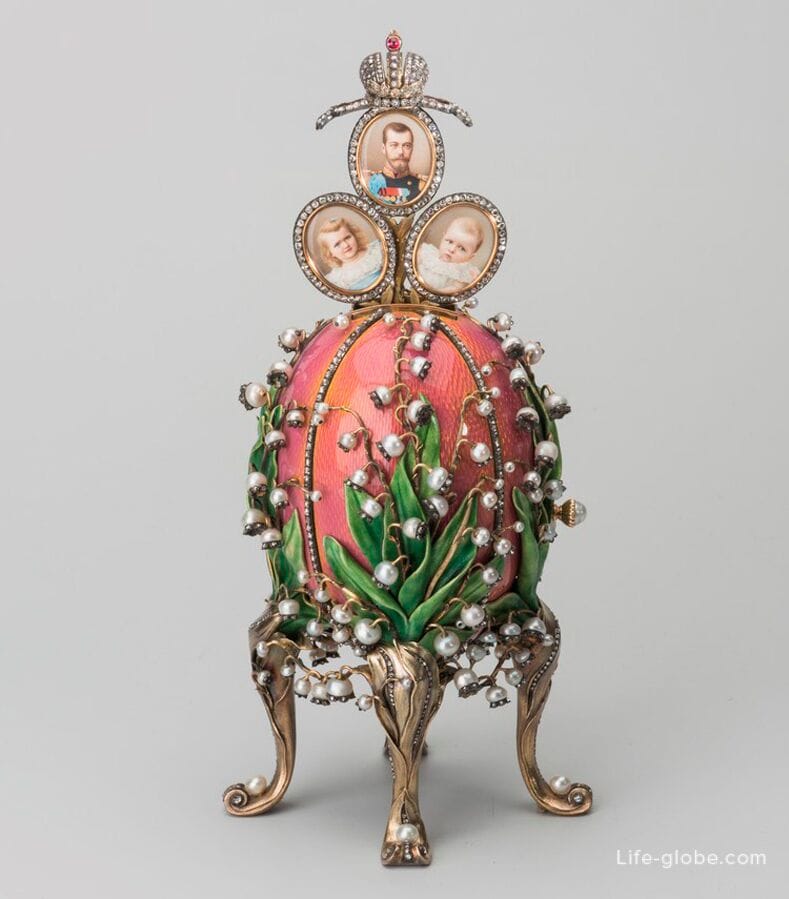
- the "Coronation" Easter egg. A gift from Emperor Nicholas II to his wife, Empress Alexandra Feodorovna, for Easter 1897. St. Petersburg, 1897, Firm K. Faberge, master M. Perkhin, a copy of the carriage made by G. Stein;
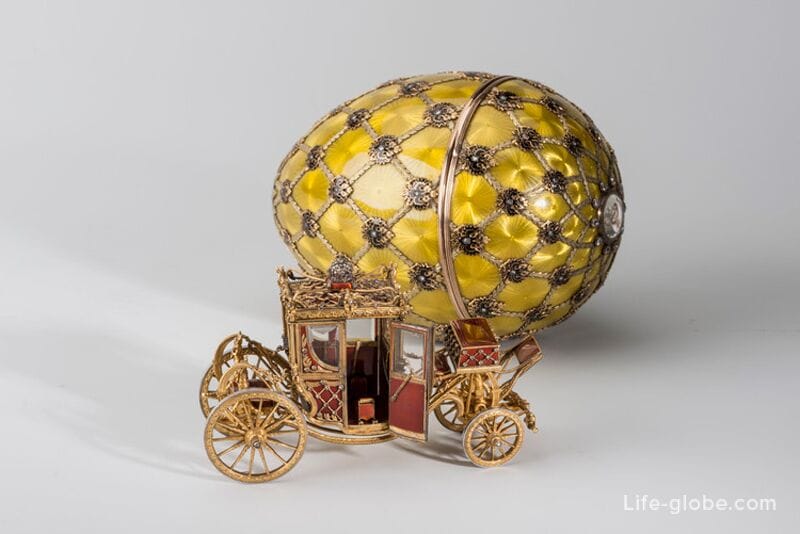
- easter egg-clock "Cockerel". A gift from Emperor Nicholas II to his mother, the Dowager Empress Maria Feodorovna, for Easter in 1900. St. Petersburg, 1900, firm K. Faberge, master M. Perkhin;

- the Bay Tree Easter egg. A gift from Emperor Nicholas II to his mother, Empress Maria Feodorovna, for Easter 1911. St. Petersburg, 1911, firm of K. Faberge;
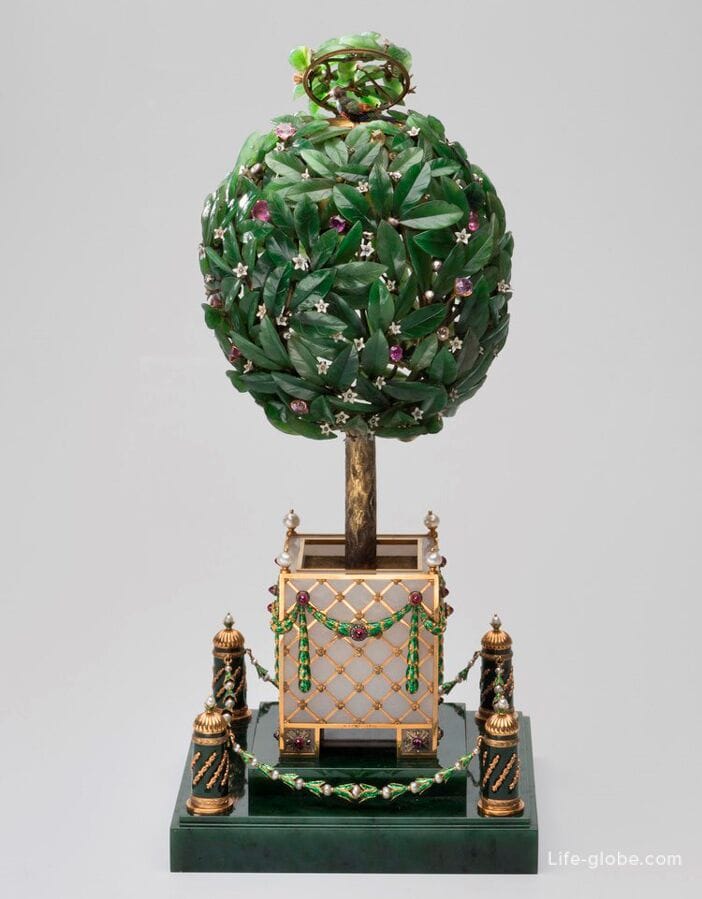
- easter egg "Fifteen years of reign". A gift from Emperor Nicholas II to his wife, Empress Alexandra Feodorovna, for Easter 1911. St. Petersburg, 1911, firm K. Faberge, master G. Wigstrom, miniature painter V. Zuev;
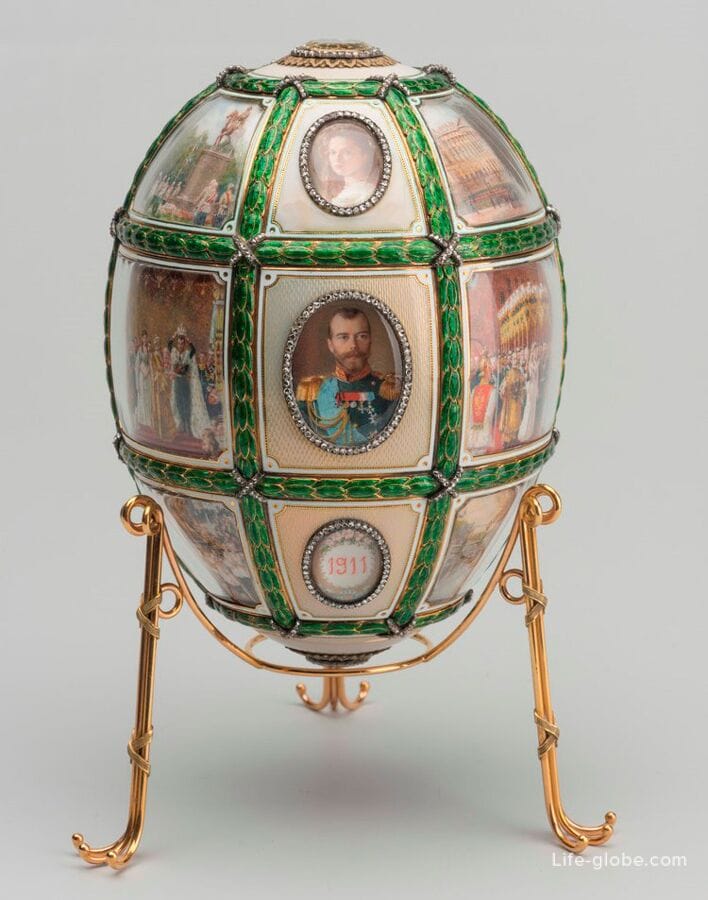
- Easter egg "Order of St. George". A gift from Emperor Nicholas II to his mother, Empress Maria Feodorovna, for Easter 1916. Petrograd, 1916, firm of K. Faberge.
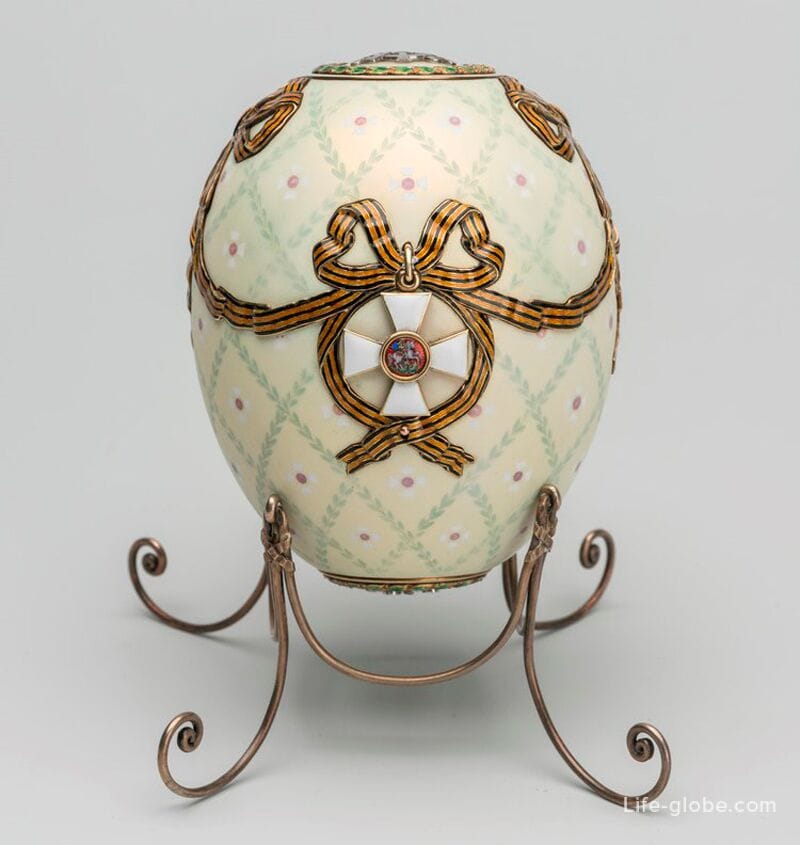
Visiting the Faberge Museum, you can not only touch the unique collection, but also walk through the restored premises of the former Shuvalov Palace, the interiors of which are impressive in themselves.
The grand staircase was built in the 1840s by Nikolai Efimovich Efimov on the site of the main passage and is bordered by a gallery for displaying sculptures. Later, the architect Rudolf Bogdanovich Bernhard erected a luxurious dome decorated with stucco above the stairs.
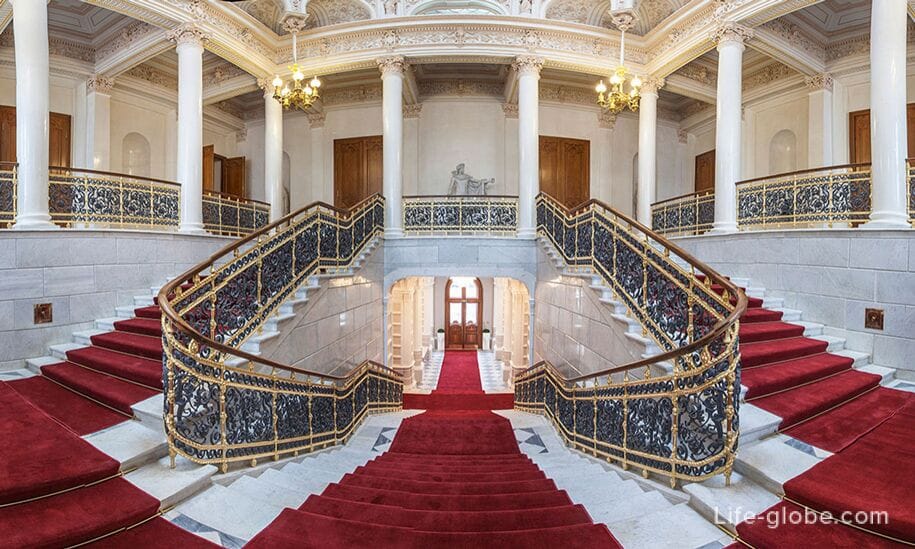
The hall presents a military theme in the works of fine and decorative arts, which combines watercolors by Karl Karlovich Piratsky and Pyotr Ivanovich Balashov, with porcelain and silver objects.
The Knights ' Hall was named after a frieze depicting a medieval jousting tournament.
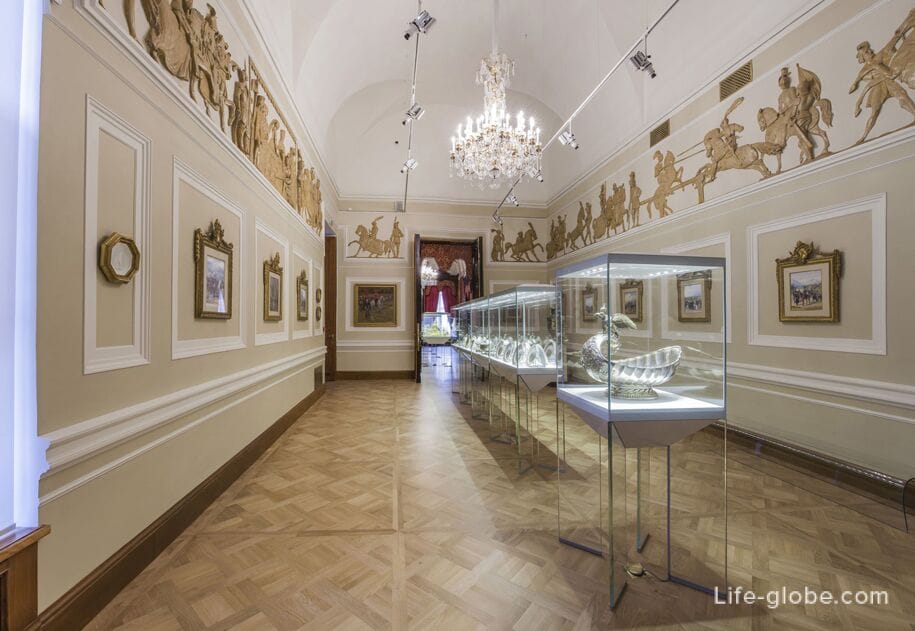
The Red Drawing room is dedicated to the collection of Russian art silver of the 18th-early 20th centuries. In separate showcases, the outstanding works of the best metropolitan firms are presented (k. Faberge, P. Sazikov, Nikols and Plinke, the Grachev brothers, Tigelstein), who held the high rank of Suppliers of the Highest Court.
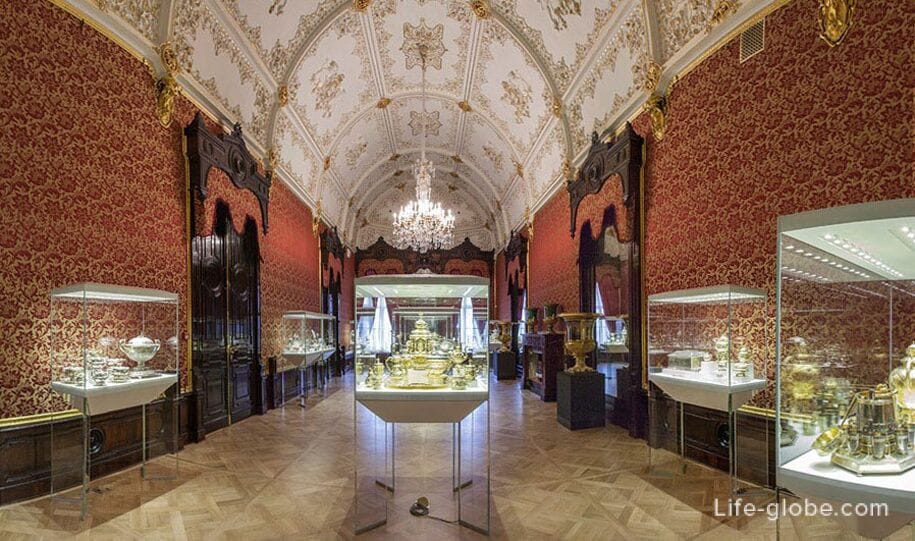
In the central drawing room of the palace, the imperial Easter eggs that belonged to the last Romanovs are displayed. It is these products, each of which has its own unique history, that have made Faberge famous all over the world.
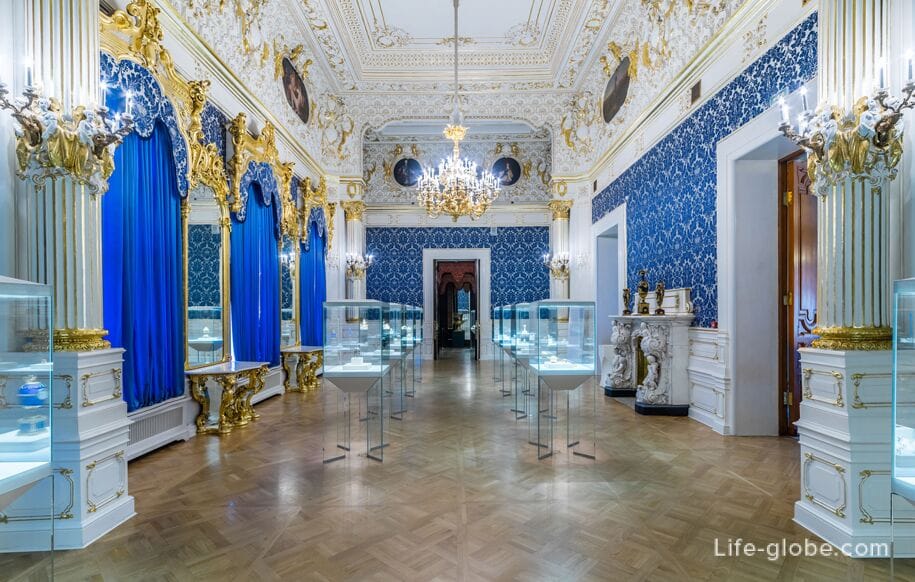
The hall presents royal gifts, objets de fantaisie by Faberge and presentation boxes.
A significant part of the items on display in the Golden Drawing Room is associated with representatives of the Romanov dynasty and their relatives abroad.
Special attention should be paid to the fantasy works made by the masters of the Faberge company, and gold boxes with portraits of Russian emperors.

In the Ante-room there is a collection of household items of wealthy people, showing a rich color palette of enamels-guilloche, and precious jewelry - the least preserved part of the heritage of the Faberge company.

Russian porcelain of the 19th century is presented in the halls. The white drawing room opens the theme of Russian enamel art with objects from the workshops of Pavel Ovchinnikov.

The exhibition Hall, which was called the "Big Study" under the first Shuvalovs and which housed the house museum, now exhibits stone-cutting products of the Faberge company and paintings by Russian masters of the 19th century.

The Gothic Hall, once the office of Count Peter Shuvalov, contains a collection of Russian icons from the 16th and 20th centuries, most of which are decorated with rich precious salaries of the most famous jewelers in Moscow and St. Petersburg.

The Upper pantry contains paintings by Russian and French masters of the late 19th and early 20th centuries, whose names are associated with Impressionism and neo-Impressionism.
The works of Pierre Auguste Renoir and the outstanding Russian impressionist Konstantin Korovin deserve special attention.
The hall also presents samples of Russian porcelain, the leading position among which is occupied by a palace vase with a painting by Fyodor Ivanovich Krasovsky.

In the Beige Hall, you can get an idea of the shapes and styles of dishes that were used in the everyday life of imperial Russia. As well as the cigarette cases presented in the hall, they demonstrate various techniques of silver processing and enamel decoration.
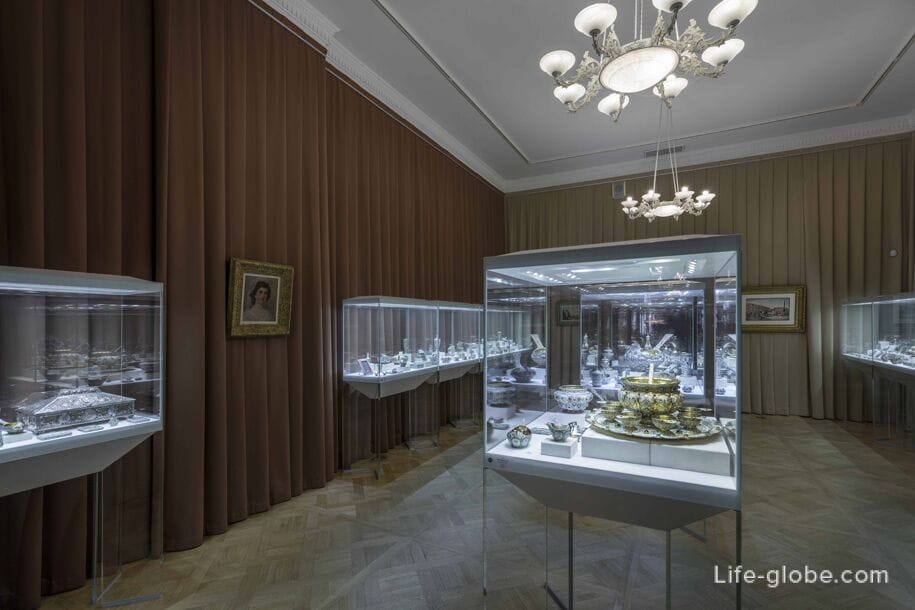
The Faberge Museum has a cafe located on the first floor of the Shuvalov Palace.
The design of the cafe is eclectic with original prints, harmoniously complements the classic interiors of the palace.
The Faberge Museum Cafe is open daily from 10: 00 to 21:00.
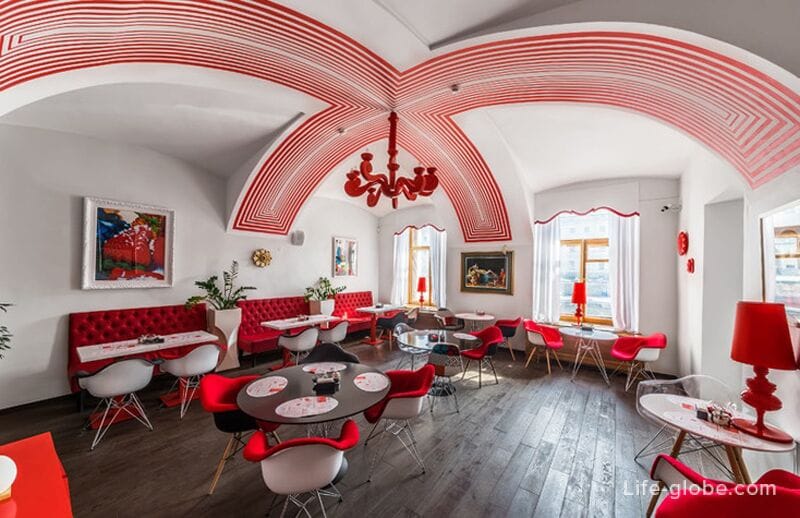
The Faberge Museum also offers guided tours, programs for children, and an audio guide.
All the necessary information: about the collections, opening hours of the museum, ticket prices, visiting rules, etc., we recommend that you check directly before visiting the official website of the museum.
Faberge Museum website: fabergemuseum.
The Faberge Museum (Shuvalov Palace) is located in the center of Saint Petersburg, close to Anichkov Bridge, on the Embankment of the Fontanka River 21.
View of the Fontanka River, the embankment and the Faberge Museum
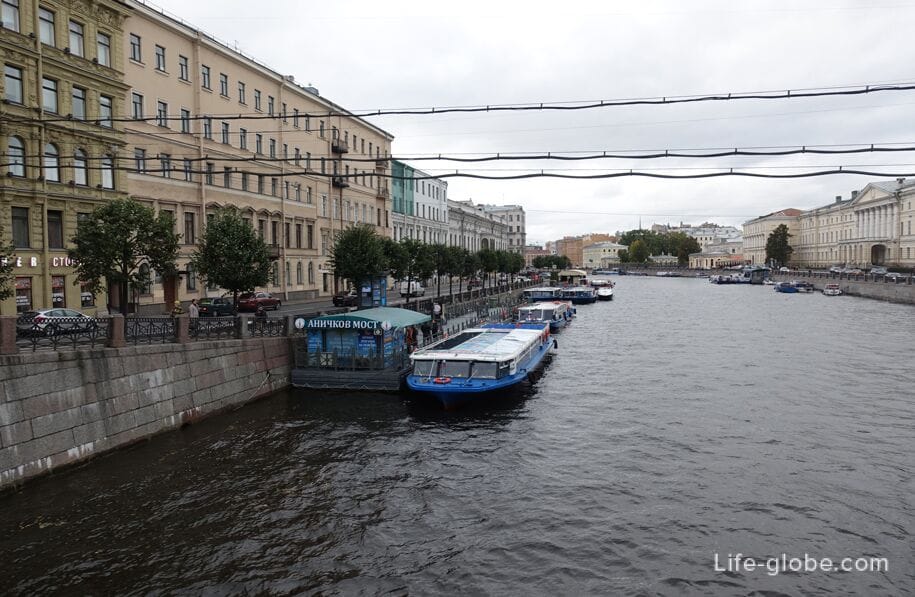
Coordinates of the Faberge Museum: 59°56'04" N 30°20'35" E (59.934444, 30.343056).
Nearest metro stations: "Gostiny Dvor", "Nevsky Prospekt", "Mayakovsky" and "Ploshchad Vosstaniya".
All accommodation facilities in St. Petersburg, including in the city center and more remote from it, can be viewed and booked here